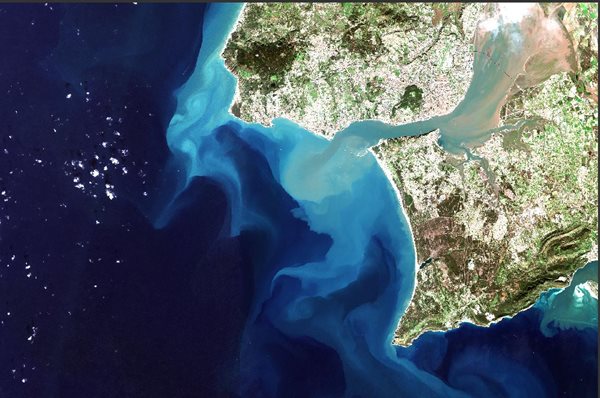The Tagus is a major estuary in Europe, located within the city limits of Lisbon, Portugal. The estuary is fed by the Tagus River, which originates in Spain and eventually merges with the Atlantic Ocean.
Industrial activity upstream and the escalating demand of the tourism and fishing industries have underscored the need for vigilant and sophisticated water quality monitoring systems to safeguard this critical ecosystem. Reliable monitoring systems using the latest tools are essential to maintain the health of this significant estuary.
CERTO in the Tagus
The CERTO project has advanced water quality monitoring in the Tagus Estuary by combining historical data analysis with innovative collection and interpretation techniques. This multidimensional approach integrates fieldwork and Copernicus satellite data to provide a comprehensive understanding of estuary health.
With the primary data collection phase finished, CERTO now relies on new data specifically tailored to the needs of the region’s key water monitoring facilities. The project is making a positive impact in addressing water quality concerns, promoting the well-being of the estuary’s waters.
CERTO on the Lisboat ferry
CERTO has installed radiometers on the Lisboat ferry to measure light reflecting off the water and incoming sunlight. Combined with satellite data, this provides a comprehensive view of the optically complex Tagus waters. The ferry’s regular crossings enable CERTO to track seasonal and event-driven changes in water quality. QR codes give passengers access to further information on CERTO’s work.

Satellite image of the Tagus estuary